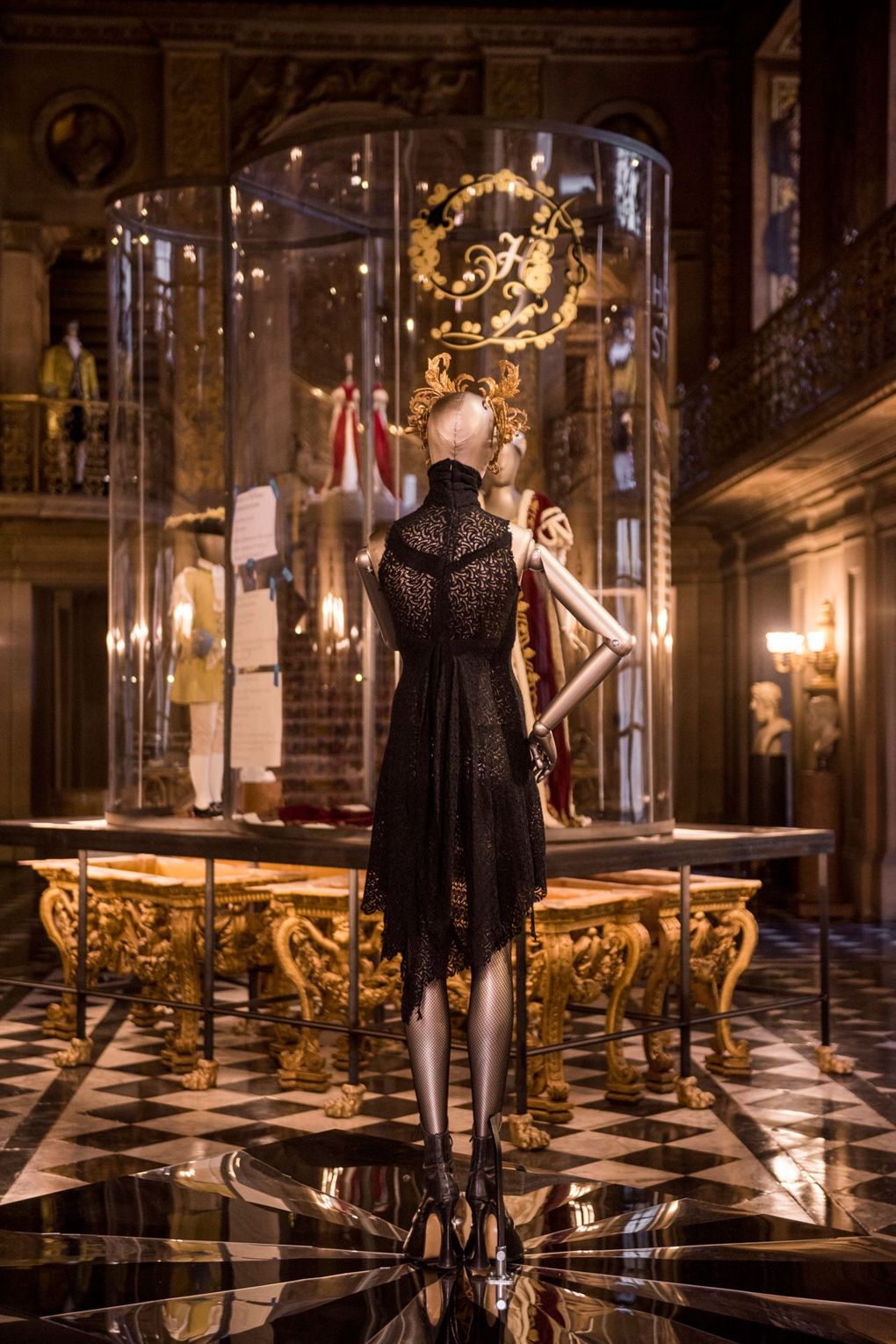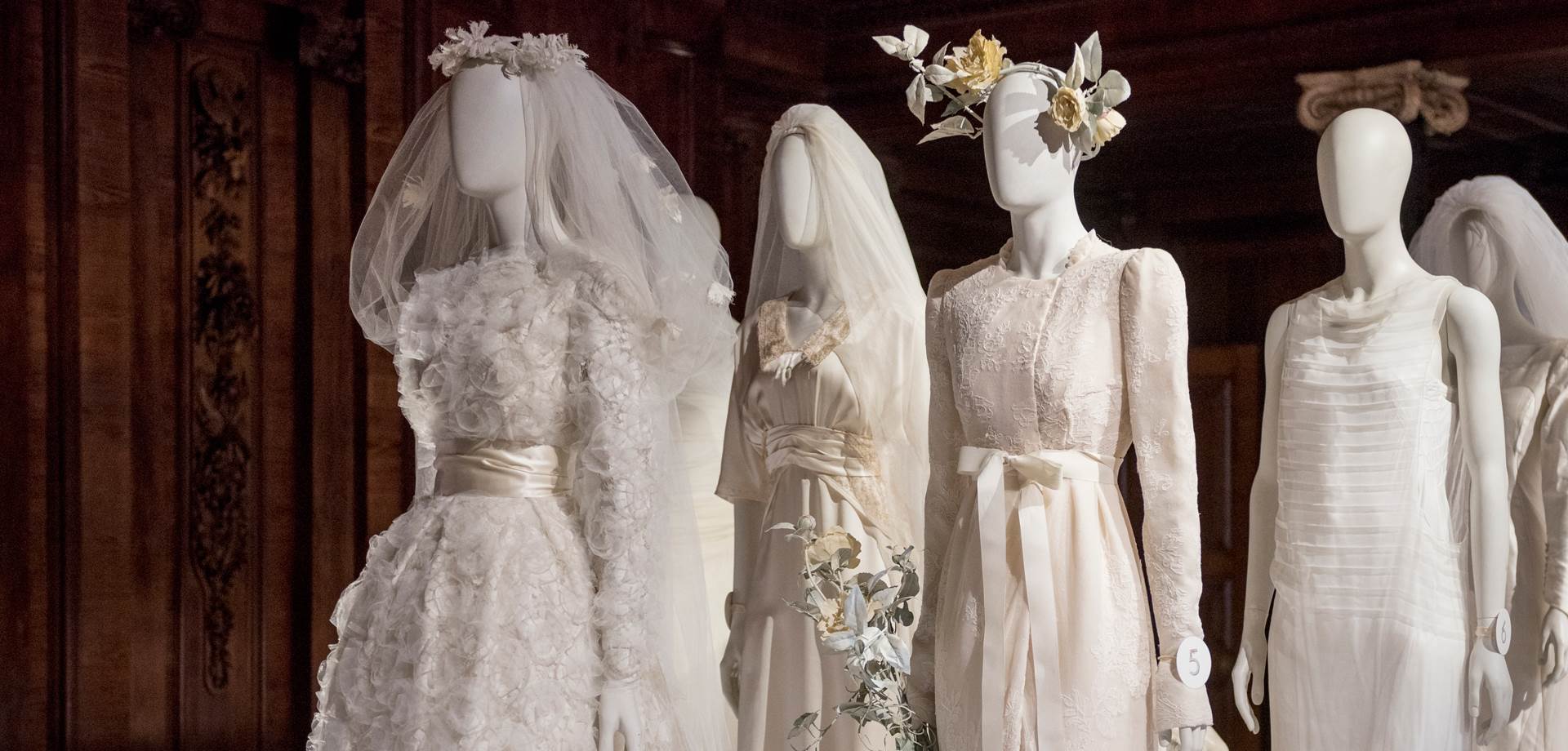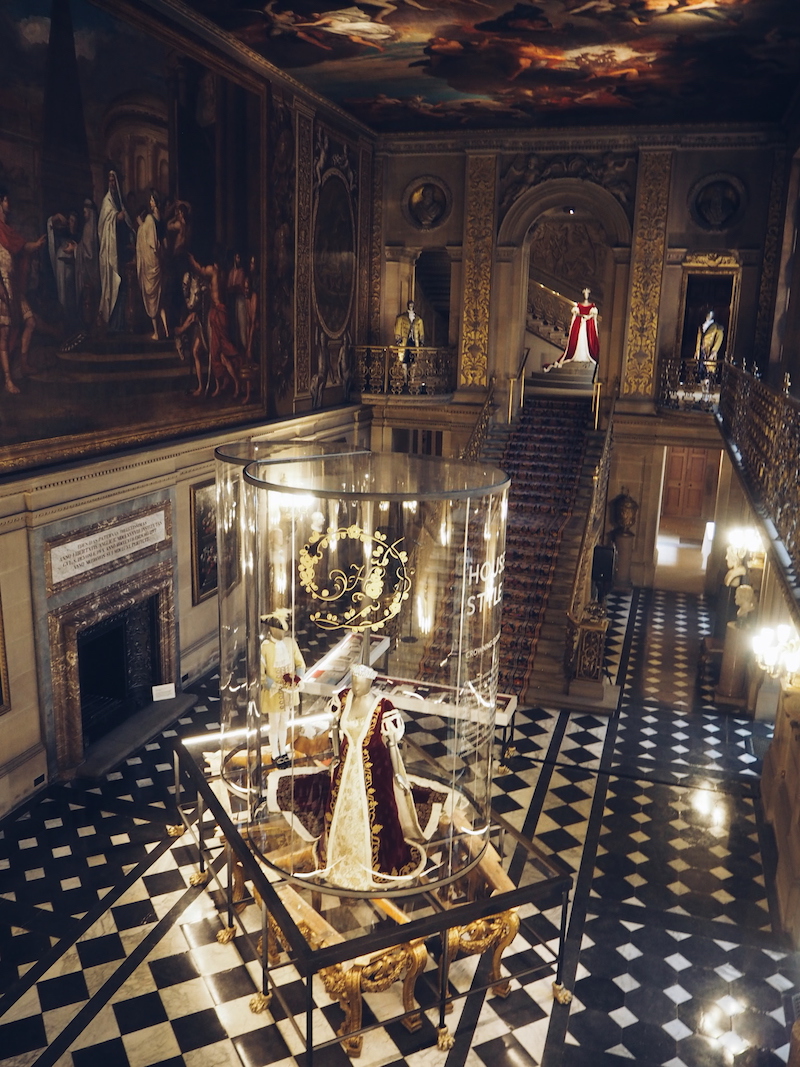Exhibition Review: House Style: Five Centuries of Fashion
Chatsworth House (London), March 25 – 22 October 2017
Many may worry that a fashion exhibition in a stately home would result in something tepid and uninspiring, focusing on livery and aristocratic formal wear, ignoring the contemporary and unusual. However, Chatsworth House has never been a traditional stately home. An iconic part of British popular culture, from its role in films like Pride and Prejudice (2005) to its place in the pages of British Vogue, it has featured in fashion’s peripheral vision for years.
Now with the creation of its first fashion exhibition, House Style: Five Centuries of Fashion, the house and its inhabitants claimed our attention with a truly magnificent display of its fashion history. Bringing together past and present with a collection of garments, objects, works of art, and archival material spanning five centuries, the exhibition set out to highlight exceptional couture designed by Jean-Phillipe Worth and Christian Dior, together with influential contemporary garments from designers such as Gucci (the exhibitions sponsor), Margiela and Vivienne Westwood. Upon entering the Painted Hall, guests were greeted by an Alexander McQueen dress worn in British Vogue by Stella Tennant. It was grungy, subversive, and informal standing boldly opposite coronation robes, worn at three consecutive coronations. It is clear that House Style was intended to tell tales of tradition and transgressions at Chatsworth by defiantly side stepping the dusty expectations of traditional exhibitions. [1]
Searching through Chatsworth’s textile department for a christening gown led Laura Burlington to discover boxes of fashion, photographs and family heirlooms that hadn’t been touched in years. The idea for Chatsworth’s largest and first fashion exhibition was born. Burlington called in American Vogue’s International Editor at Large Hamish Bowles to help curate the exhibition, who in turn called in costume historian Patrick Kinmonth and his creative partner Antonio Monfredo. Collectively, they created a truly masterful portrayal of the ever-evolving relationship between Chatsworth house, the Devonshire family, and fashion. It reveled in the idiosyncratic personalities that have lived in the house and that have used fashion as a vivid form of self-expression from the 16th century to present day. [2]
Around twenty-five of Chatsworth’s staterooms were used to display more than a hundred mannequins in ten foot-high curved-glass cabinets. Alongside these were portraits, jewels, ceramics and pieces of furniture. The overall look was one that brought together a complete depiction of Chatsworth’s relationship with the arts. Indeed, Kinmonth drew upon the house’s extensive collection of contemporary art and sculpture to create an unusual layout for the exhibition. It was not presented to us in chronological order. Instead it brought together pieces from across generations, encouraging comparisons between classical design and modern innovation. Including pieces belonging to Bess of Hardwick, one of the most powerful women of the 16th century, 18th century “Empress of Fashion” Georgiana, through to the current Duke and Duchess of Devonshire and their extended family.
The exhibition’s raison d’etre was “the storytelling power of clothes” — a point which was made clear upon entering through the magnificent Painted Hall. Following the McQueen dress and Coronation robes came a corridor that housed long glass cabinets, displaying pieces of fashion ephemera and intimate family possessions, such as photographs, letters, and scrapbooks. These when displayed next to jewels and individual garments allowed us a deeply personal look into the lives of those that have lived at Chatsworth, and provided context for the pieces displayed.
This was most clearly felt when entering the estates chapel. At the center stood a number of wedding dresses, circled by another glass cabinet filled with objects and photos from the weddings. Their elegance and grace was heightened by the power of the surrounding architecture and its combination of old and new art (Damien Hirst’s eight-foot tall ‘Saint Bartholomew, Exquisite Pain’ (2006) was juxtaposed within the chapel’s altarpiece. Above it, the carved figures of Faith and Justice could be deciphered, flanking Antonio Verrio’s painting of ‘Doubting Thomas’ (1694)). The overall effect was ethereal and gave the garments a particular sense of historical importance.
The curating also allowed for a comparison of styles, tastes, and trends, as with the inclusion of Lady Celina’s dress by Franka from 1995 — a classical princess-line gown of slubbed silk (its traditionalism softened by the large buttons down the back, each hand-embroidered with an image from Winnie the Pooh) — to Helmut Lang’s diaphanous creation for Stella Tennant from 1999. The dresses showed how varied the tastes were from bride to bride and create an exquisite portrayal of wedding fashion throughout the years.
It was slightly disappointing to leave the chapel, however, since the following room felt somewhat less thought through. It gathered a number of black designer creations; without much context to ground them, however, they felt slightly lost within the heavily wood panelled room. The good news was that this disappointment did not last long: The following rooms were filled with decadent depictions of a costume ball held in 1897, where guests shut down ateliers with their demand for the most impressive costumes. These included a dress by Jean-Philippe Worth worn by Duchess Louise as Zenobia, Queen of Palmyra and were accompanied by portraits of the guests in these creations. This led into a room, dimly lit, filled with glittering pieces of contemporary couture, ranging from Chanel to Vivienne Westwood, giving the viewer greater insight into the fashion history of the house that has inspired its future generations to continue the tradition of transgressing sartorial rules.
The exhibition, although dominating a lot of the house, didn’t feel vast or exclusionary. It worked beautifully to present an intimate view into the history of Chatsworth House and combined the past and present in a way that keeps the traditional feeling relevant and the contemporary accessible. The overall styling of the exhibition really drew from the house and brought more than just pieces of fashion together, thereby proving that fashion has an important part to play in the history of a place.
Notes
[1] Chatsworth House. 2017. House Style. Accessed September 4, 2017. https://www.chatsworth.org/events/house-style/.
[2] Henderson, Violet. 2017. Cache In The Attic: Inside Chatsworth's 'House Style: Five Centuries Of Fashion'. Accessed September 2017. http://www.vogue.co.uk/gallery/chatsworth-house-five-centuries-of-fashion-exhibition.





